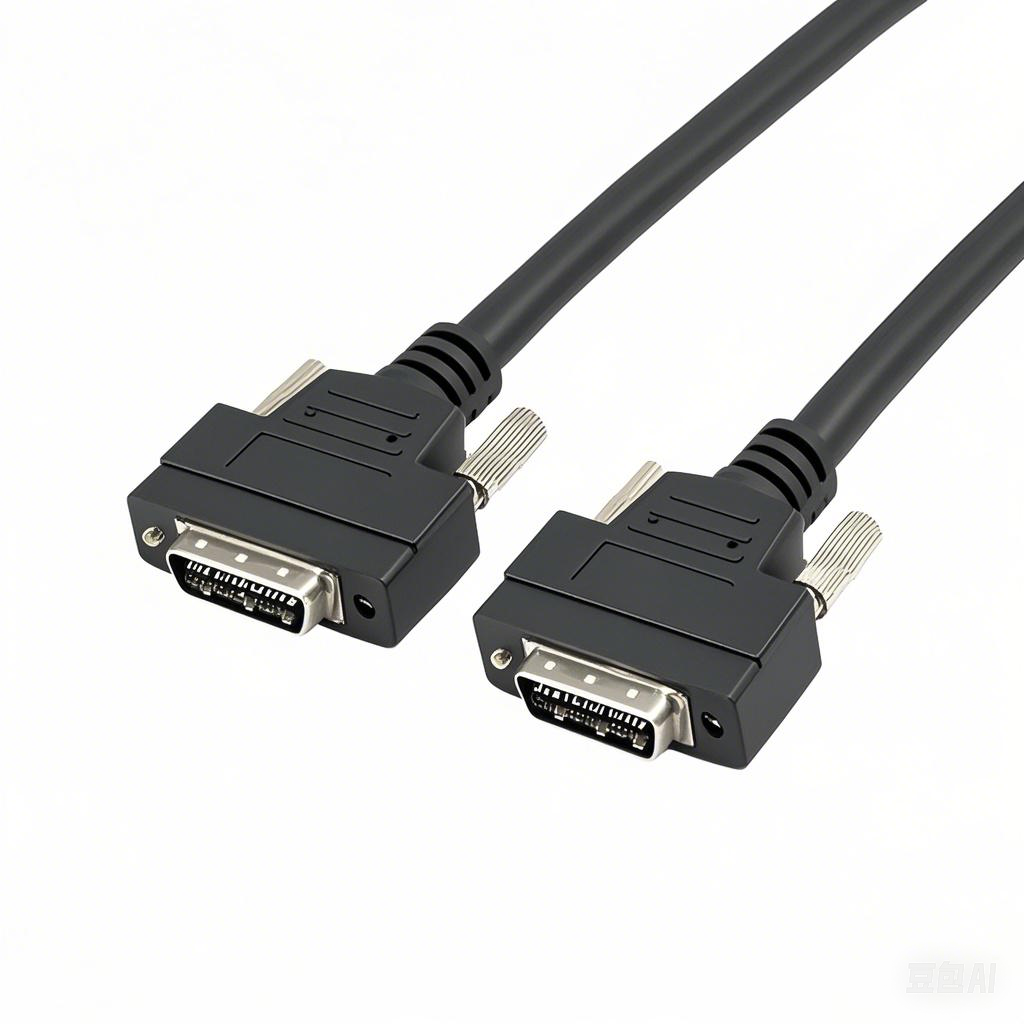How to Select Machine Vision Cables for Robotic Applications
Machine vision is critical for modern robots, enabling tasks like precise guidance, quality inspection, and object recognition. However, all those powerful cameras and sensors rely on getting clean, reliable data back to the controller. The cables connecting them are vital lifelines, and choosing the wrong ones for a robotic application leads to downtime, costly replacements, and unreliable performance. Here’s what you need to consider:
1. Flexibility & Flex Life (The MOST Critical Factor):
- Problem: Robots move – constantly. Arms bend, rotate (torsion), and twist. Standard cables aren’t built for this and will fail quickly.
- Solution: Choose highly flexible, continuous flex-rated cables. Look specifically for cables designed for millions of flex cycles.
- Key Terms: Torsional resilience is essential – can the cable handle twisting motions without damage? PUR (Polyurethane) jackets are often preferred over PVC for better flexibility and durability.
2. Shielding: Protecting Your Signal
- Problem: Robot cells are electrically noisy environments (motors, drives, welders). EMI/RFI interference distorts delicate image signals, causing flickering, noise, or complete data loss.
- Solution: Robust electromagnetic shielding is non-negotiable. Look for cables with:
- Foiled Pairs: Individual twisted pairs wrapped in foil for protection against crosstalk.
- Overall Braided Shield: A woven metal braid around all conductors (combination foil + braid offers maximum protection).
- 360-degree Connector Shielding: The shield must connect cleanly and fully to the connector housing.
3. Connectors: Secure and Robust
- Problem: Vibration and movement can loosen connections, leading to signal dropouts. Exposed pins are vulnerable.
- Solution:
- Locking Mechanisms: Choose connectors with secure screw-locks (like M8/M12 threaded) or reliable push-pull locks (like M12-D-coded for Ethernet). Avoid simple friction-fit connectors.
- Robust Housing: Metal or high-strength plastic housings withstand impacts better.
- Right Coding: Ensure connectors match the camera/sensor port (e.g., M12 A-coding for sensor, X-coding for GigE, D-coding for Ethernet/IP). Get angled connectors if needed for tight spaces.
4. Cable Jacket: Durability Against the Environment
- Problem: Cables face abrasion from dragging, exposure to oils, coolants, cleaning chemicals, and possibly UV light (if near windows).
- Solution: Choose jackets resistant to your specific environment:
- PUR (Polyurethane): Excellent choice for most robots: highly flexible, good resistance to oils, coolants, chemicals, and abrasion.
- TPE (Thermoplastic Elastomer): Good flexibility and general chemical resistance.
- Avoid Standard PVC: Generally too stiff and degrades in oily/chemical environments. Only suitable for very light-duty, static applications.
5. Cable Construction: Built for Motion
- Problem: Internal wires can break or short if not designed to move together.
- Solution: Look for these motion-optimized features:
- Stranded Conductors: Fine strands allow better bending.
- Special Filling: Some cables use fillers to prevent internal conductor migration during bending/twisting.
- Shorter Lay Lengths: How tightly the conductors are twisted affects flexibility – shorter lay lengths enhance flex life.
6. Getting the Length Right
- Problem: Too short = cable strain and failure. Too long = cable tangling, snagging, or excessive loop management.
- Solution: Measure the entire path the cable will take during the robot’s full range of motion, including service loops and strain relief points. Add a reasonable safety margin (e.g., 10-15%), but avoid excessive length.
7. Strain Relief: Where Cable Meets Connector
- Problem: The connection point is a high-stress area prone to failure.
- Solution: Use proper strain relief boots at both ends of the cable (camera and controller/I/O point). These absorb bending stress right at the connector.
8. Cable Management Integration:
- Problem: Even the best cable needs support.
- Solution: Plan how the cable will be routed and supported before choosing:
- Cable Carriers (Energy Chains): Essential for guiding and protecting cables moving linearly. Ensure the cable is compatible with carriers (requires a smooth, non-abrasive jacket like PUR).
- Proper Routing: Avoid sharp bends exceeding the cable’s minimum bend radius. Keep away from sharp edges and heat sources. Secure cables properly.
Key Selection Checklist for Robot Vision Cables:
- ✅ Continuous Flex Rating: Millions of cycles.
- ✅ High Torsional Resilience: If your robot twists.
- ✅ Robust EMI Shielding: Foiled pairs + braided shield.
- ✅ Locking Connectors: M8/M12 screw-lock or secure push-pull (correct coding!).
- ✅ Durable Jacket: PUR (usually best) or TPE, matching your environment.
- ✅ Motion-Optimized Internals: Stranded conductors.
- ✅ Correct Length: With safety margin, avoiding excess.
- ✅ Strain Relief: Boots at BOTH ends.
- ✅ Cable Management Plan: Carriers & routing.
Why This Matters: Selecting the right vision cable isn’t just about specs; it’s about reliability and uptime. A cheap, static cable might save a few dollars upfront but will fail rapidly on a robot, costing far more in replacements and lost production. Invest in cables engineered for the demanding world of robotic motion. Your machine vision system – and your production line – depends on it.











